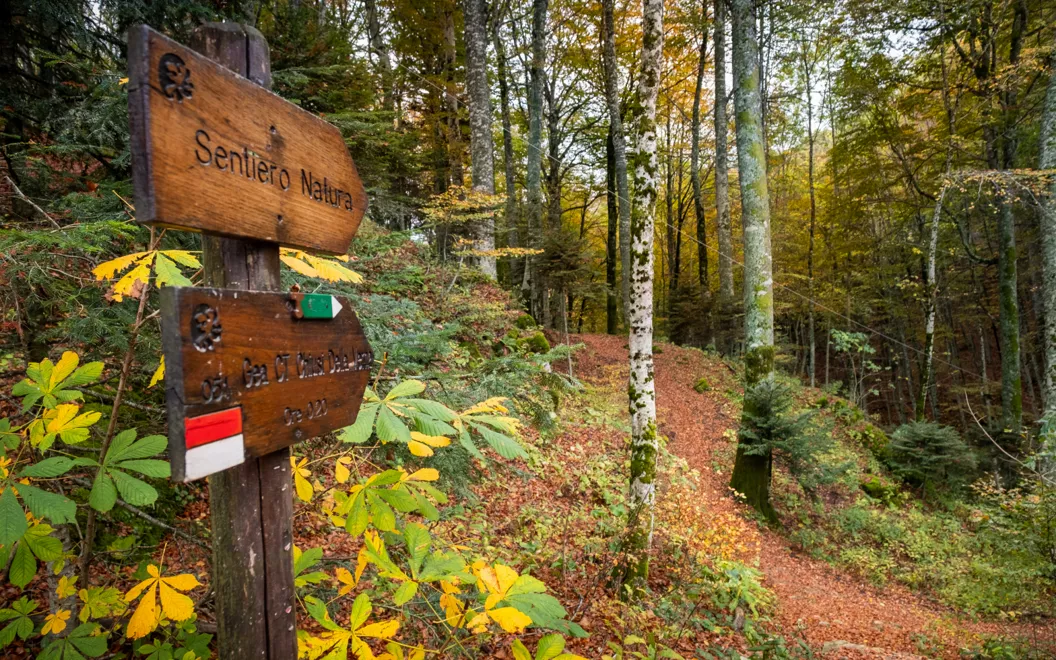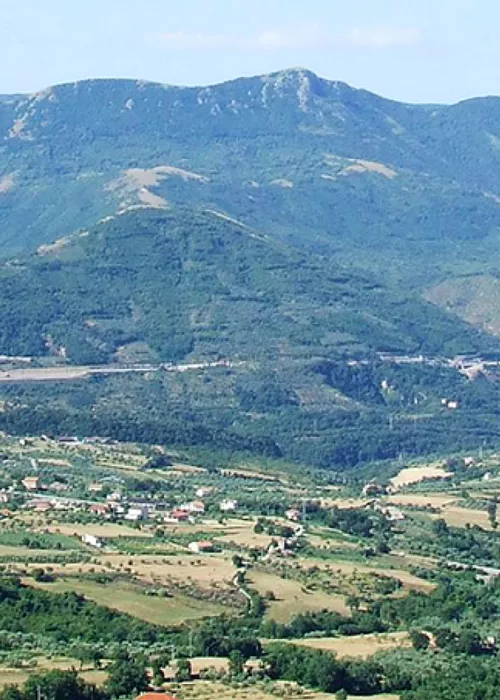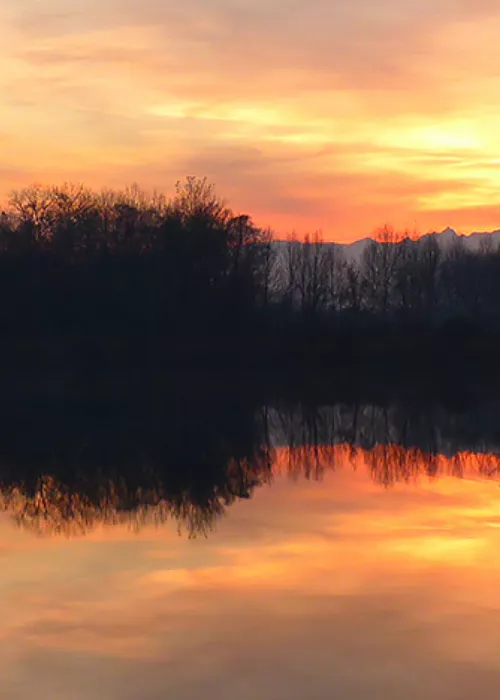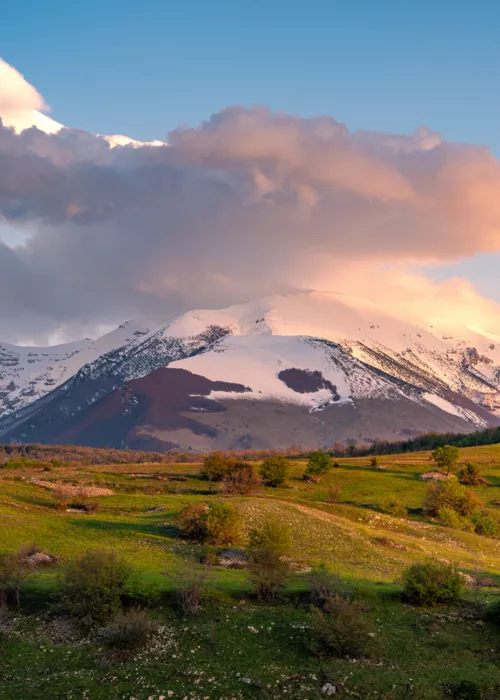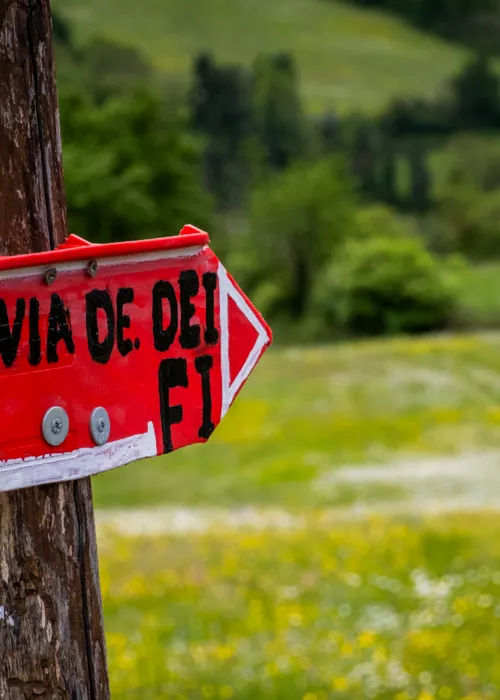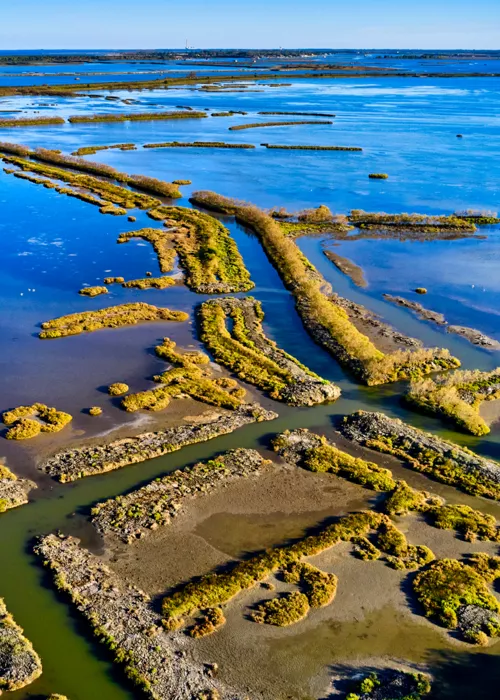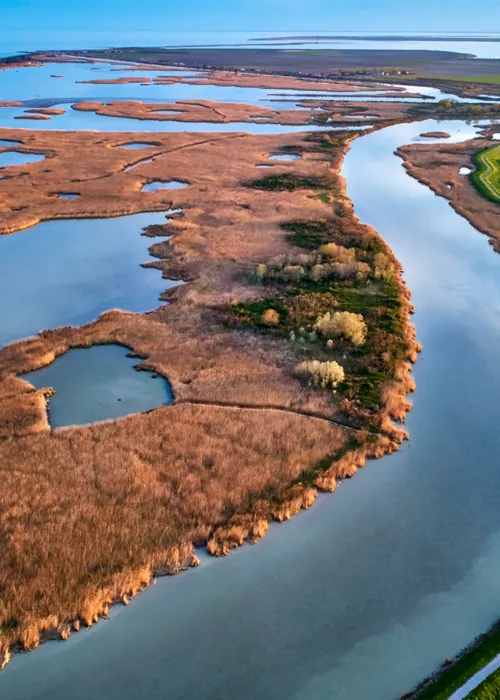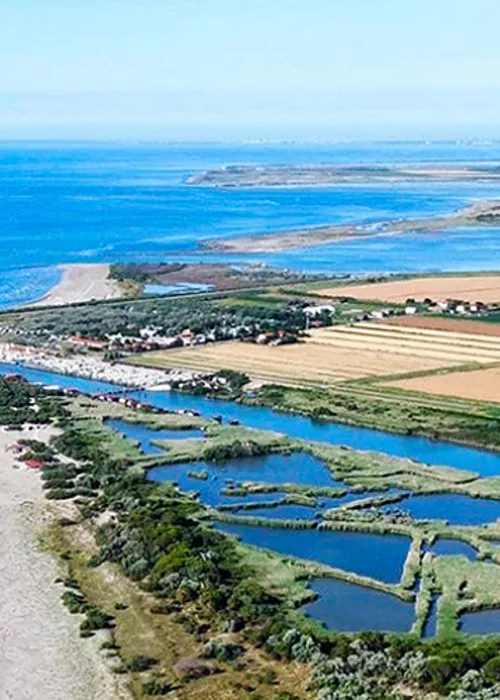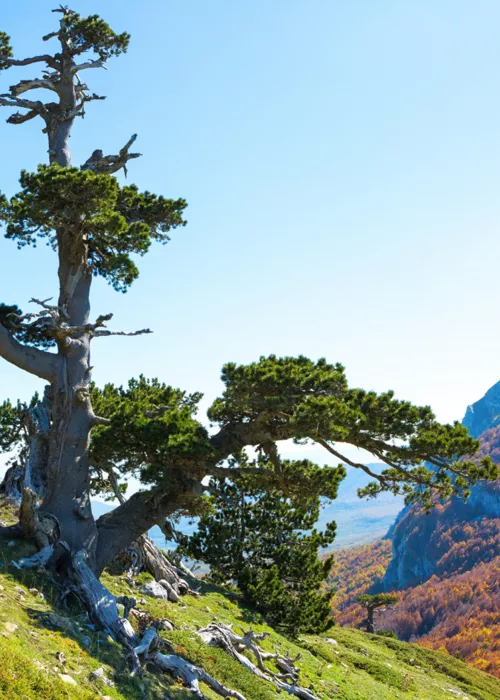From Chiusi di La Verna to Pieve Santo Stefano

The first leg starts at Chiusi di La Verna and ends at Pieve Santo Stefano.
You'll be walking for 15 kilometres through the Forests of the Casentino Park in Tuscany, along a path that's also suitable for inexperienced hikers. The views are picturesque and also evoke the places visited and praised by St Francis of Assisi.
We start at Chiusi di Laverna and taking trail number 51, we cross the "Bosco delle Fate" ("Fairies' Wood"). The first few steps of the Way take you through tall trees, mossy forest floors and hidden caves, illuminated by the rays of light falling between the leaves, creating a fairytale atmosphere.
After about half an hour, you'll come to the Sanctuary of La Verna, one of the holiest and most fascinating places on the whole of the Way of St Francis: this is where Francis received the stigmata.
For the next 7 kilometres, the path is almost all uphill, except for a few short sections. The gradients gradually increase as you come to the top of Mount Calvano and then Mount Modina.
The remaining 8 kilometres of this leg are all downhill, on an easy to navigate unsurfaced road, as far as the point of arrival. Pieve Santo Stefano is known as the “city of diaries” as it is home to a fascinating diary museum, Il Piccolo museo del diario, . The exhibits include thoughts written by ordinary people, telling the everyday lives and stories of Italy in various forms including diaries, letters, memoirs and autobiographies.
From Pieve Santo Stefano to Sansepolcro

Starting from Pieve Santo Stefano to San Sepolcro. You will cross the Alpe della Luna Nature Reserve and the Monte Verde area, with a recommended stop at the Cerbaiolo hermitage.
The stage is tough, so much so that it is recommended, if you are not in top shape, to split it by planning a night in Pian della Capanna, to leave the next morning.
The first section has a long and demanding climb that continues from Viamaggio into the woods, a passage that during the Second World War followed a stretch of the Gothic Line.
Nowadays the war, at least here, is only a sad memory and there are only friendly faces. If you are lucky, in fact, you can see roe deer and deer in the Alpe della Luna Nature Reserve, while walking among the majestic trees and the landscapes evoked in the Canticle of Creatures of San Francesco, until you reach theHermitage of Montecasale, the place where Francis is said to have converted the three thieves.
Continue downhill towards Sansepolcro, a welcoming town and a treasure chest of Renaissance art and beauty. In its name, Sansepolcro refers to the two pilgrims who, having returned from the Holy Land, founded a monastic community here.
From San Sepolcro to Citerna

The third leg, from Sansepolcro to Citerna, is a transitional section passing from Tuscany to Umbria, amid crop fields and old farmhouses. Our advice is to save enough time and energy to enjoy the compact and well-preserved historic centre of Sansepolcro, whose cathedral has a sculpture with the evocative image of a pilgrim.
This leg is relatively short, at just over 12 km, a 4-hour walk. Leaving Sansepolcro, after about 3 km you find yourself among fields and old farmhouses, in sight of Umbria, the "land of St Francis".
Here we are in Citerna, a village nestling on a hill in the Upper Tiber Valley. It is a gem of a town, with a compact and well-preserved historic centre, where pilgrims can be sure of a warm and friendly welcome. Before leaving, it is worth visiting the Church of St Francis, which preserves the wonderful Madonna and Child in terracotta, by Donatello.
From Citerna to Città di Castello

Contemporary 19th-century art is represented by Alberto Burri, who was born in this town, and many of his works can be seen in the museums here. Citerna is the starting point for the second Tuscan leg of the trail. We enter the Upper Tiber Valley, where the gently-rolling hills are dotted with little villages, rural churches and copses. The first stop is the Franciscan hermitage "Buon Riposo" ("Good Rest"), a reference to the refreshing break that Francis took on his journey. The hermitage has also welcomed Gino Bartali, who during the Second World War saved 800 Jews by hiding false documents in the handlebars of his bicycle.
It's now time to visit Città di Castello, a city of art, and our final stop. The city is home to many fine buildings and churches, such as the Cathedral and the churches of St Dominic and St Francis. In the Diocesan Museum you can see the Treasure of Canoscio, one of the oldest remaining hoards of silver objects for liturgical use, dating back to the early Christian era.
Contemporary 19th-century art is represented by Alberto Burri, who was born in this town, and many of his works can be seen in the museums here.
From Città di Castello to Pietralunga

A stage lasting about 30 kilometres. So many, too many to be tackled all in one go. In fact, you can, and in fact must, stop, drink and refresh yourself, choosing one or more intermediate stops. You climb up and then down the Umbrian hills, walking along mule tracks and secondary roads, through woods and meadows without any particular gradients or difficulties. About 6 km from the departure from Città di Castello, you reach Sasso, an ideal stopping point before reaching Pieve de’ Saddi, an important place because it was the site of the first Christianisation of theUpper Tiber Valley and for centuries served as the religious centre of the area.
Today, the parish church is a hostel run by volunteers who welcome with warmth, restoring the walkers who have to face the ups and downs that divide them from Pietralunga a village reminiscent of the Middle Ages, with its tangle of alleyways surrounding the 8th century Lombard fortress. The stop is also an opportunity to visit the Candeleto complex, where you can camp and eat and where an important ornithological collection is kept in the Candeleto Oasis.
From Pietralunga to Gubbio

At 26 kilometres, this is another very long leg of the trail, taking you along mule tracks and country roads through woods and meadows, without any steep gradients or challenges. There are, however, many places to stop, rest, sleep and gather your energy under shady trees or perhaps in a church or abbey, even if they are closed. Along the way, your gaze sweeps over the Umbrian hills. Once at the hamlet of Loreto, you can enjoy the scenery from the viewpoint next to the Church of St John the Baptist.
On arrival in Gubbio, , your efforts will be rewarded by the view of the historic centre and the places that link St Francis to this city. In front of the Church of St Francis in Gubbio, you will notice the statue of St Francis and the wolf, in memory of the miracle of the fierce beast tamed by the saint.
You can find out more about the deep bond between Francis and this Umbrian city on the history trail “Fratello Lupo Gubbio”, which takes pilgrims on a tour of the Franciscan places of Gubbio, the "second home" of the saint from Assisi.
Gubbio, one of Umbria's oldest cities, still has its medieval street plan. From above, the city is dominated by the Basilica of St Ubald, in the centre there is the 14th-century Piazza Grande, lined by two historic palaces, Palazzo dei Consoli and Palazzo Pretorio, the Cathedral and the Ducal Palace. Outside the walls, there is a Roman Mausoleum, the Church of St Secundus, the Church of Our Lady of Prato and the Vittorina church, all testimonies to the city's glorious past.
From Gubbio to Valfabbrica

This is a very long section of the trail, and is also very demanding due to the steep ascents and descents along its nearly 46 kilometres. It is the reverse of one of the routes taken by Francis, who after divesting himself of all his worldly goods before the Bishop of Assisi, headed to Gubbio. To follow this long trail, you leave Gubbio and continue through the valley of the Chiascio river.
Your first stop is at the abbey of Vallingegno, where Francesco was reluctantly welcomed and put to work in the kitchens.
The second is the Church of the Ripe, where you can stop for a break. From here, the trail climbs up through the woods to the hermitage of St Peter in Vigneto, where there is a hostel for weary travellers. With water bottles filled, you can start walking again to the Church of Caprignone. Yourlast intermediate stop is the castle of Coccorano, from which you can tackle the descent to Valfabbrica.
From Valfabbrica to Assisi

In the 13 kilometres of the last stage, you walk through olive groves and vineyards, uphill and downhill, waiting to reach Assisi. The first stretch is in the woods, with some challenging differences in height. When you come out of it, you can see the outline of the Basilica of St Francis and the city of Assisi.
The excitement grows. You can choose to enter the Forest of San Francesco, crossing it as an alternative to a stretch of tarmac road.
Assisi is just a step away, the highlight of the Camino has arrived. Enter the city through the St. James gate and head towards the Basilica of St. Francis. The lower basilica will welcome you with the starry vaulted ceiling and the paintings of Giotto and Cimabue. Head down, to reach the Tomb of the Saint, a place that expresses a strong, almost palpable mysticism. Only the dim light of a lantern illuminates Francis' tomb, and silence reigns around it, inviting recollection and prayer.
The final, symbolic and emotional part of the walk takes place at the entrance to the Lower Basilica, where you find the Statio Peregrinorum and the Testimonium (for those who have walked 100 km or cycled 200 km) or the Chartula Peregrini, symbols of an unforgettable experience, are collected.


